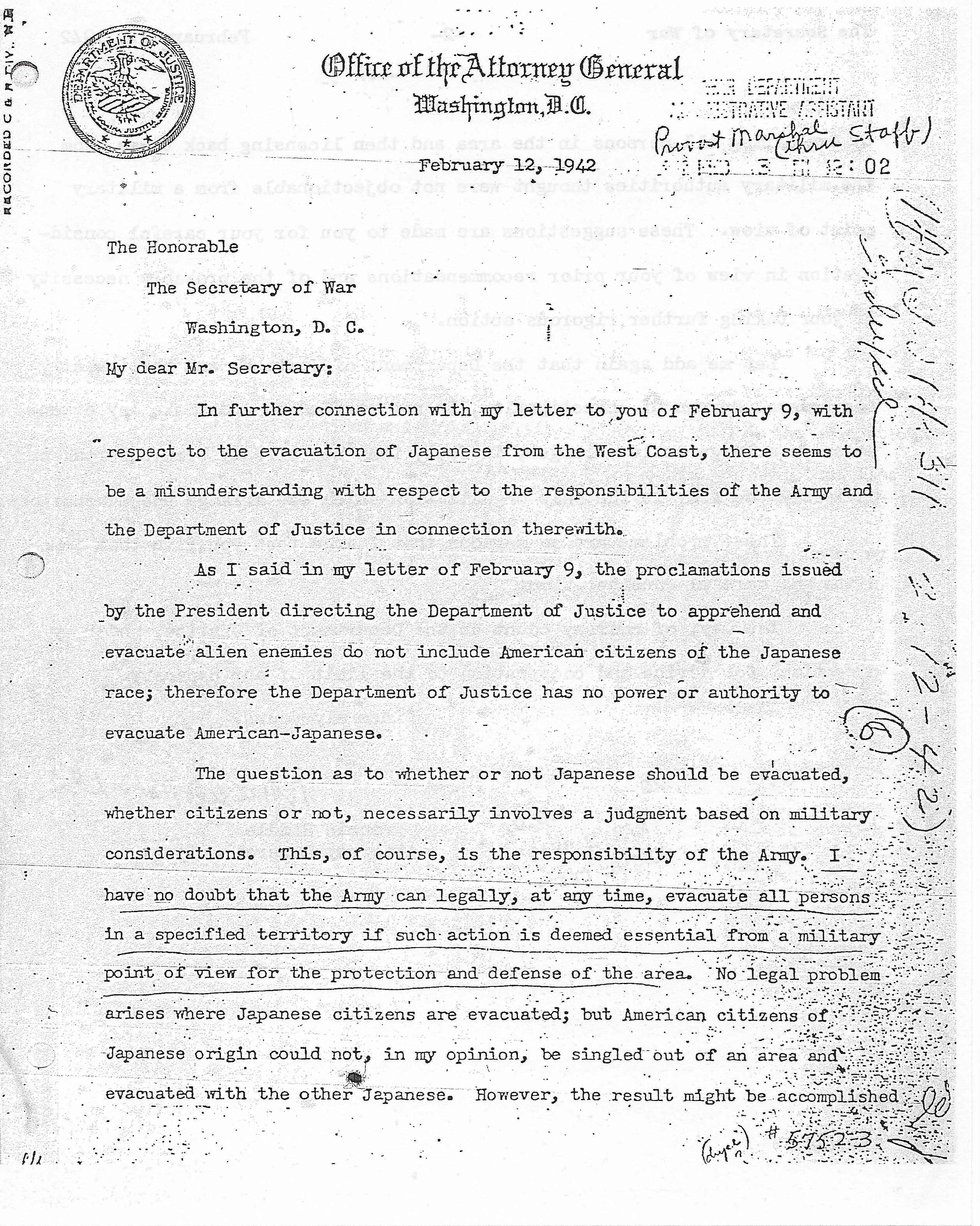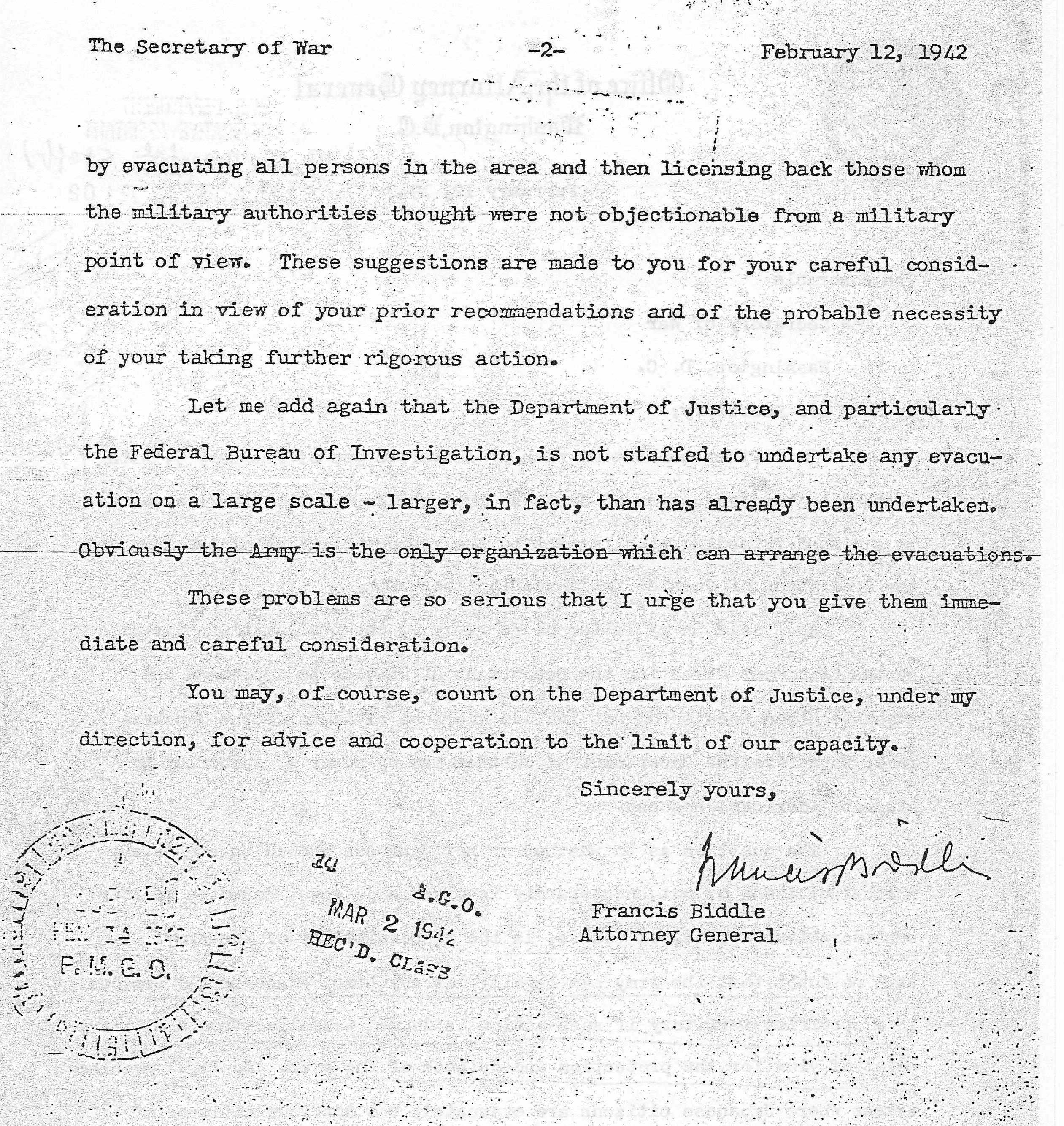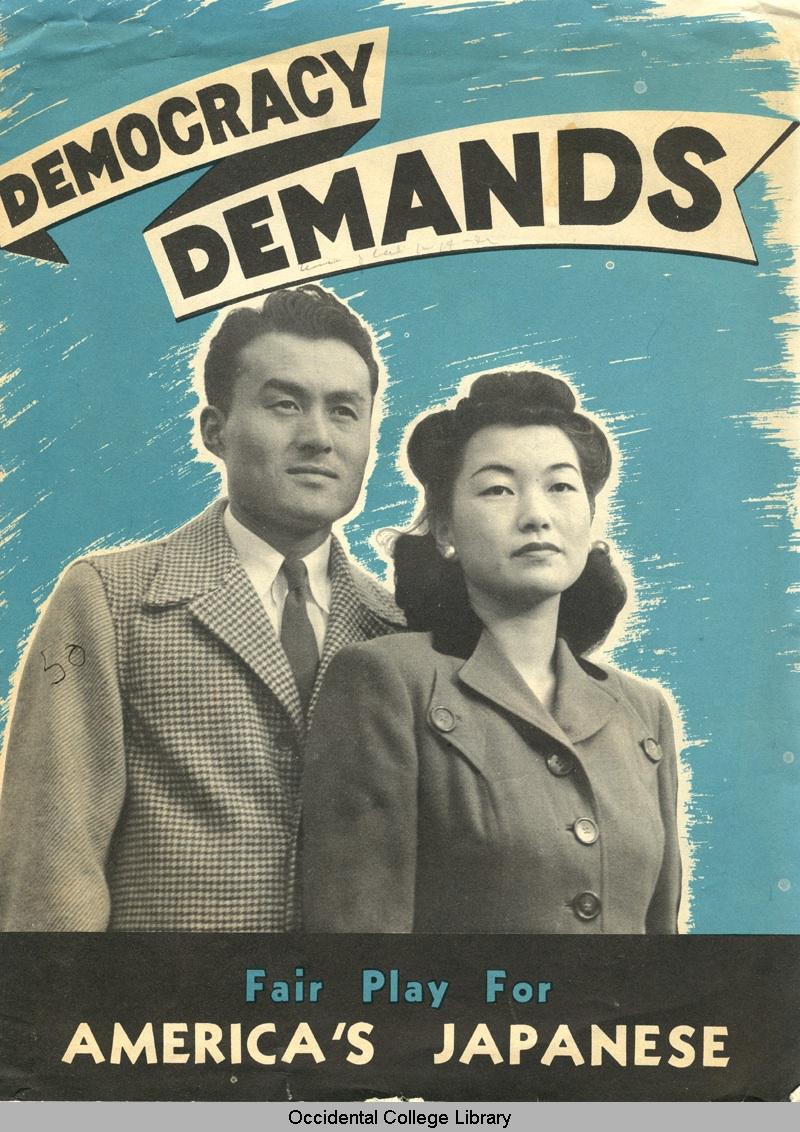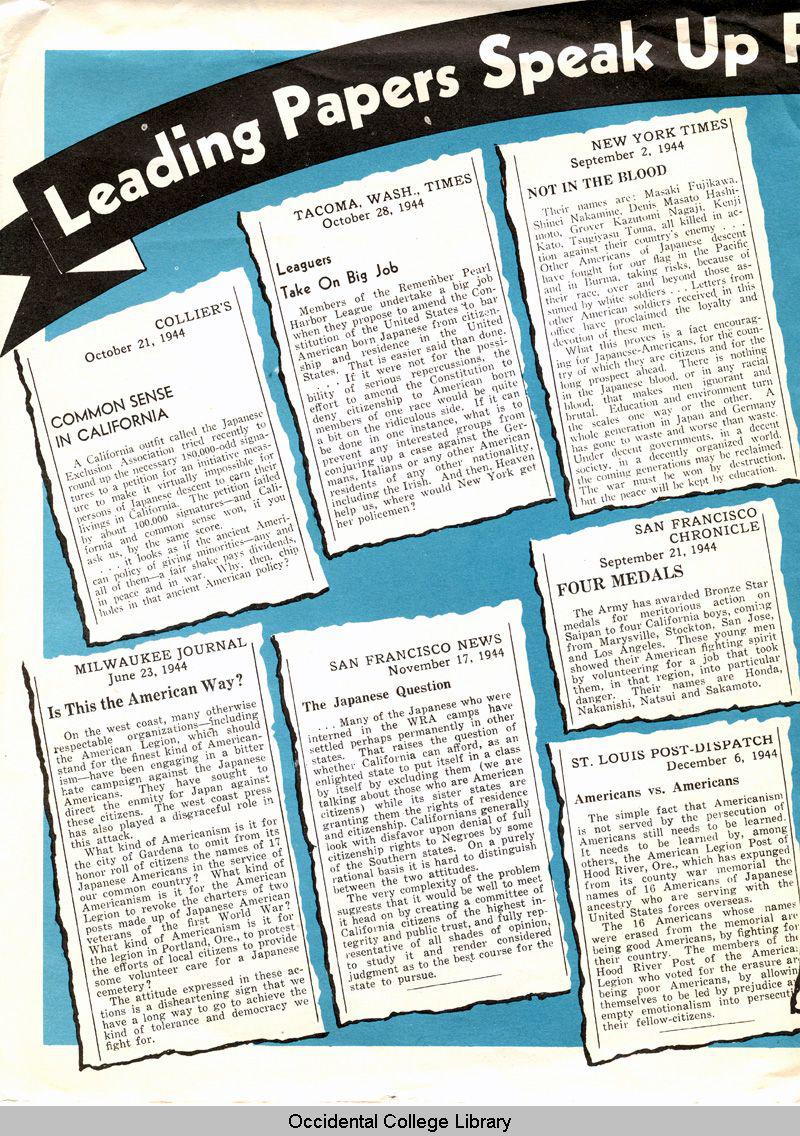BEYOND BARBED WIRE:
The Debate and Diplomacy Surrounding Japanese Internment
DEBATE
Initial Debates
The primary debate disputed was if Japanese Americans should be sent to internment camps following the attack on Pearl Harbor.
Those in Favor
One distinguishable figure in favor of internment was Theodore Geisel (Dr. Suess), with a political cartoon representing anti-Japanese public opinion. It depicted a man with a telescope facing west to allude to Japanese Americans wanting to institute another attack on the US-based on orders from Japan.
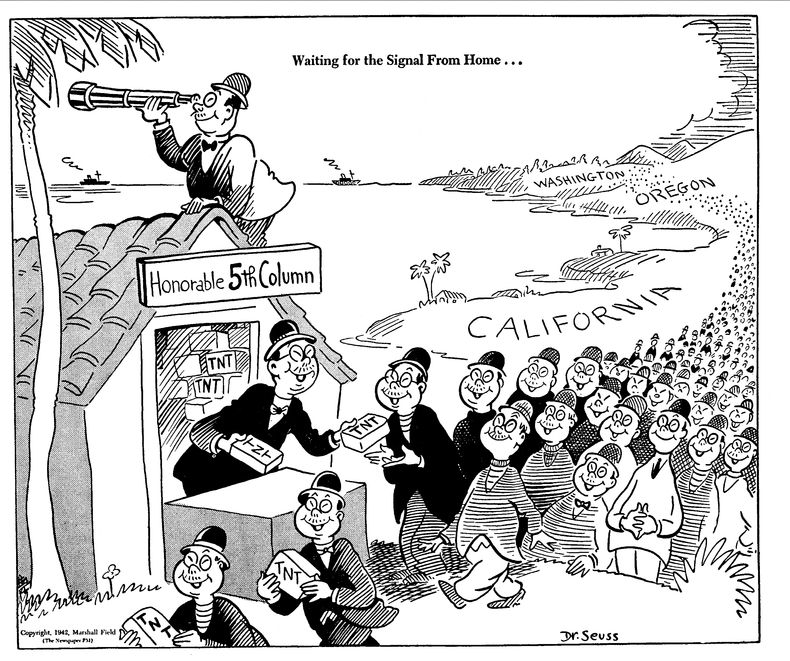
(Geisel, 1941)
"But right now, when the Japs are planting their hatchets in our skulls, it seems like a hell of a time for us to smile and warble: “Brothers!” It is a rather flabby battle cry. If we want to win, we’ve got to kill Japs, whether it depresses John Haynes Holmes or not. We can get palsy-walsy afterward with those that are left"
-Dr. Suess
Those Opposed
American Baptist Home Mission Society created pictorial booklets to gain support for stopping the internment. US Attorney General Francis Biddle also argued that the evacuation would "materially disrupt agricultural production” and that “the farm labor” was “so limited that they could not be quickly replaced."
"Future historians will record thie evacuation-this violation of citizenship rights-as one of the blackest blots on American history; as the time that democracy came the nearest of being wrecked”
-Emery Andrew, pastor of the Japanese Baptist Church, 1943
Northern California Affiliate of the ACLU
The ACLU had split views on challenging Executive Order 9066. The Northern California affiliate of the ACLU specifically led the fight on behalf of Japanese Americans. They handled two cases, Hirabayashi v. United States (1943) and Korematsu v. United States (1944) (ACLU, 2010), where they provided legal counseling.
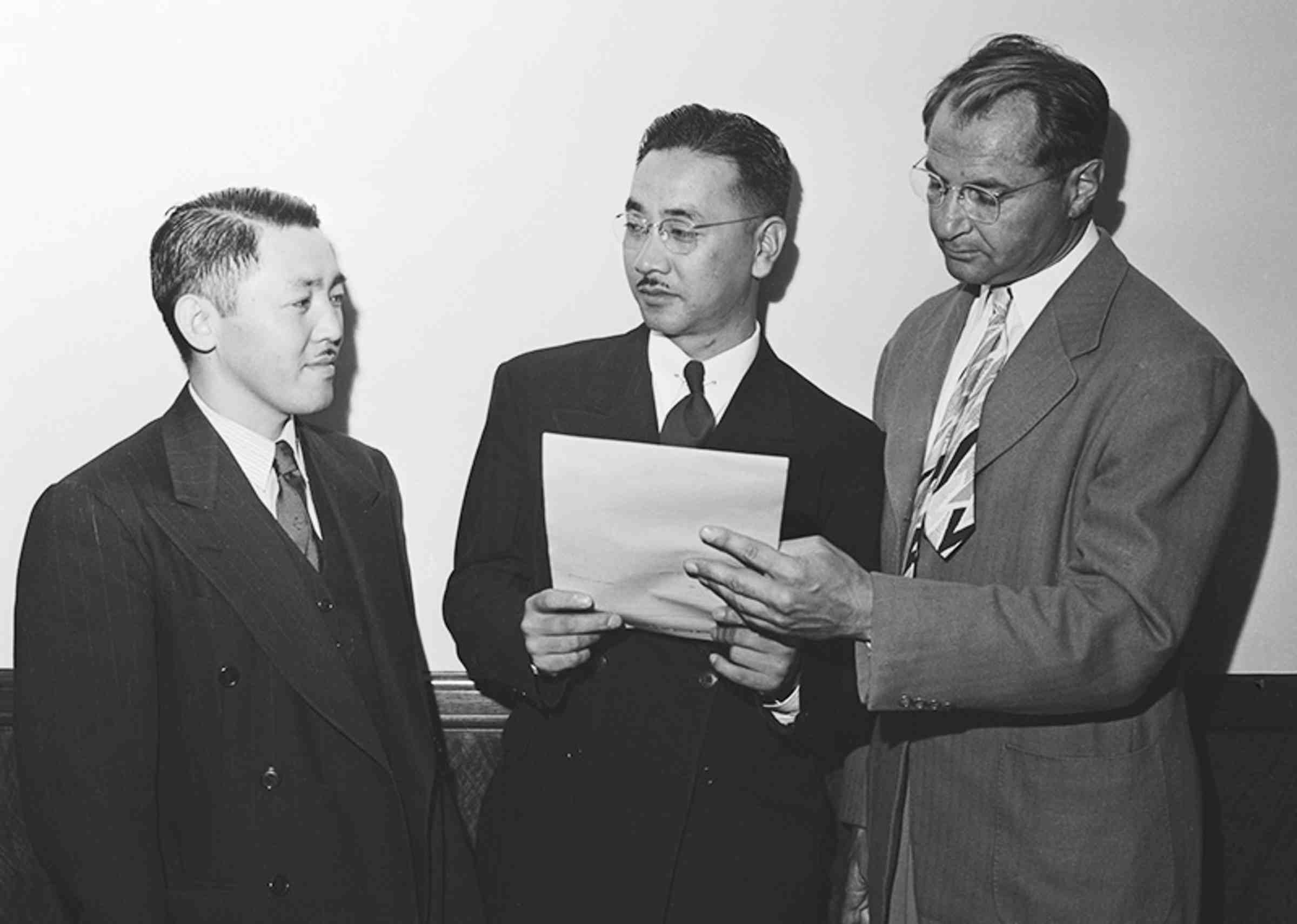
(Young, 1944)
"This unprecedented order is open to grave question on the constitutional grounds of depriving American citizens of their liberty and use of their property without due process of law … the protection of our country in war-time can be assured without such a wholesale invasion of civil rights and without creating a precedent so opposed to democratic principle."
-Roger Baldwin's, ACLU national director, response to EO9066
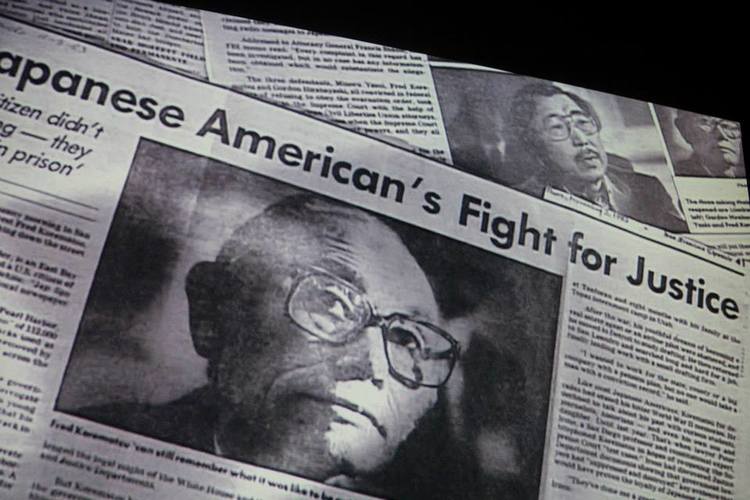
(Unknown, 1976)
Korematsu v. United States
A center of the debate was the case of Fred Korematsu, a Japanese American man who defied Executive Order 9066. He argued that the order infringed upon the 5th Amendment. The court ruled the decision as necessary to secure the coast from invasion.
“According to the Supreme Court decision regarding my case, being an American citizen was not enough. They say you have to look like one, otherwise they say you can’t tell a difference between a loyal and disloyal American. I thought that this decision was wrong and I still feel that way. " - Fred Korematsu
Ex parte Mitsuye Endo
Another case of debate involved Mitsuye Endo, who argued that she should be released and have her freedoms returned. Justices unanimously agreed that this incarceration was a restraint of liberty.
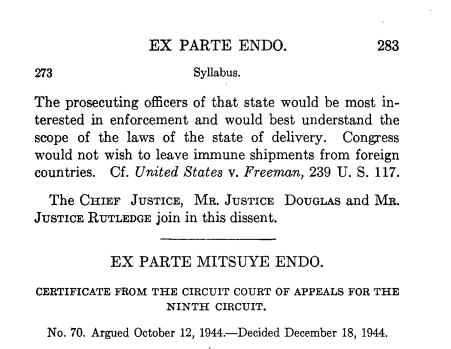
(Library of Congress, 1944)
Debate After Internment
After three years of internment, the government decided that the internment was immoral. However, another debate arose with opposing sides arguing if this internment was motivated by racial tensions or solely national security.
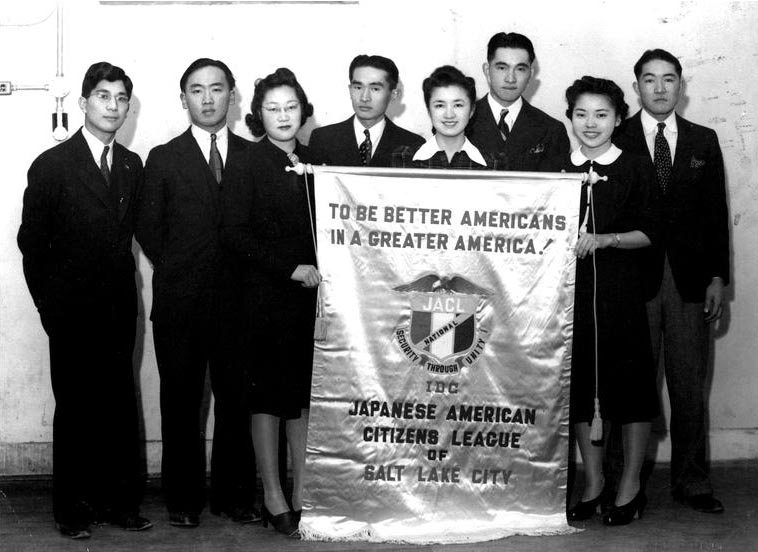
(Ted Nagata, 1939)
Japanese American Citizens League
The Japanese American Citizens League gathered after the internment to seek monetary compensation. They later altered their focus to creating a federal commission, with the purpose of investigating the consequences of the incarceration.
